Abstract
24 children with severe protracted diarrhoea from 10 families, in which at least one sibling was affected, are reported. In two families the siblings were from 1st-cousin marriages, in one family both parents had unaffected children from previous marriages, and in another family the mother had a normal daughter from an earlier marriage. The onset of the diarrhoea was on the first day of life in 12 infants, some time during the first 17 days in 10, and at 13 weeks and 1 year 6 days in the remaining two. In each case the diarrhoea was `cholera-like'. Investigations failed to show any of the established causes of protracted diarrhoea and 21 (87·5%) infants died after an illness that had lasted between 12 days and 6 years 38 weeks, despite periods of prolonged intravenous feeding and the administration of a wide variety of pharmacological agents. The 2 patients who recovered appeared to do so spontaneously. 14 (58%) had associated extra-gastrointestinal or gastrointestinal-related anomalies. Steady-state perfusion studies were performed in the proximal jejunum of 2 patients, and in the colon of one. In both cases the jejunum was in a net secretory state with respect to water, glucose absorption was markedly reduced, and the transmural potential difference was also depressed; in one of these patients fructose absorption was also reduced, and in the other colonic function appeared to be normal. These studies suggest that the diarrhoea resulted from small intestinal secretion overwhelming the reabsorptive capacity of a normally-functioning colon. Although this series of lethal protracted diarrhoea does not represent a single disease entity, the familial pattern suggests an autosomal recessive mode of inheritance for at least one of the conditions.
Full text
PDF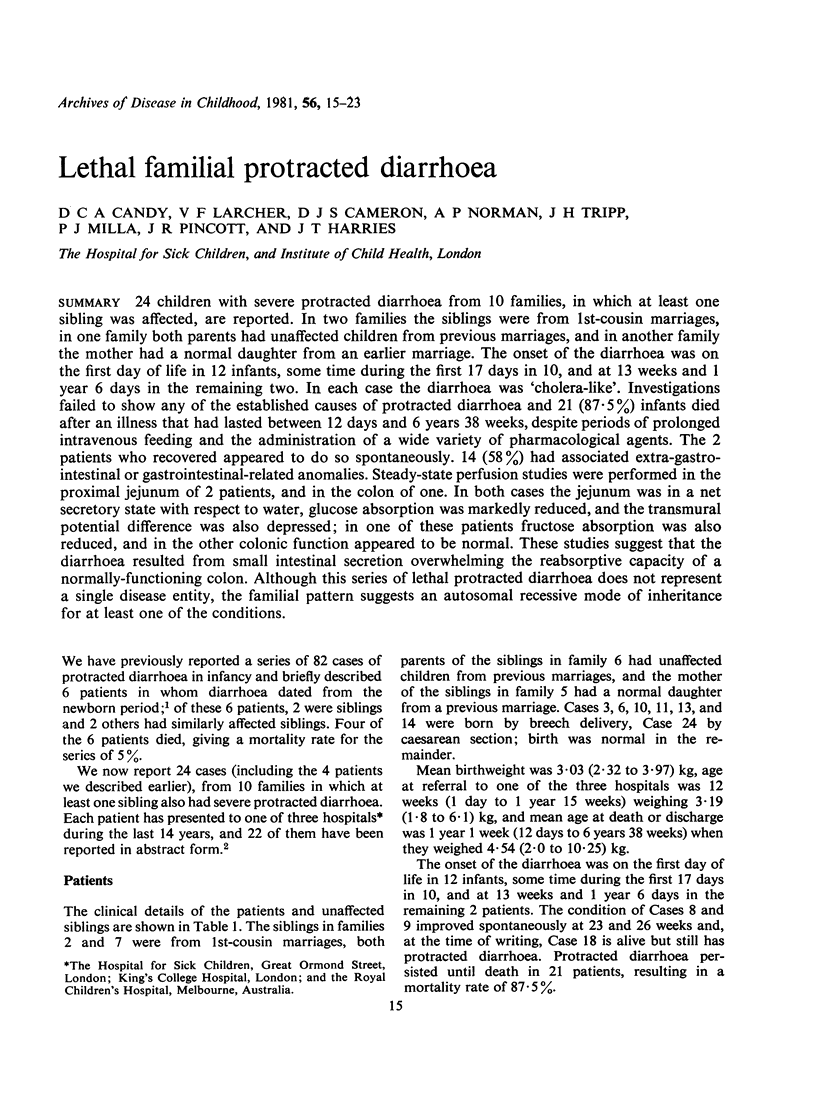
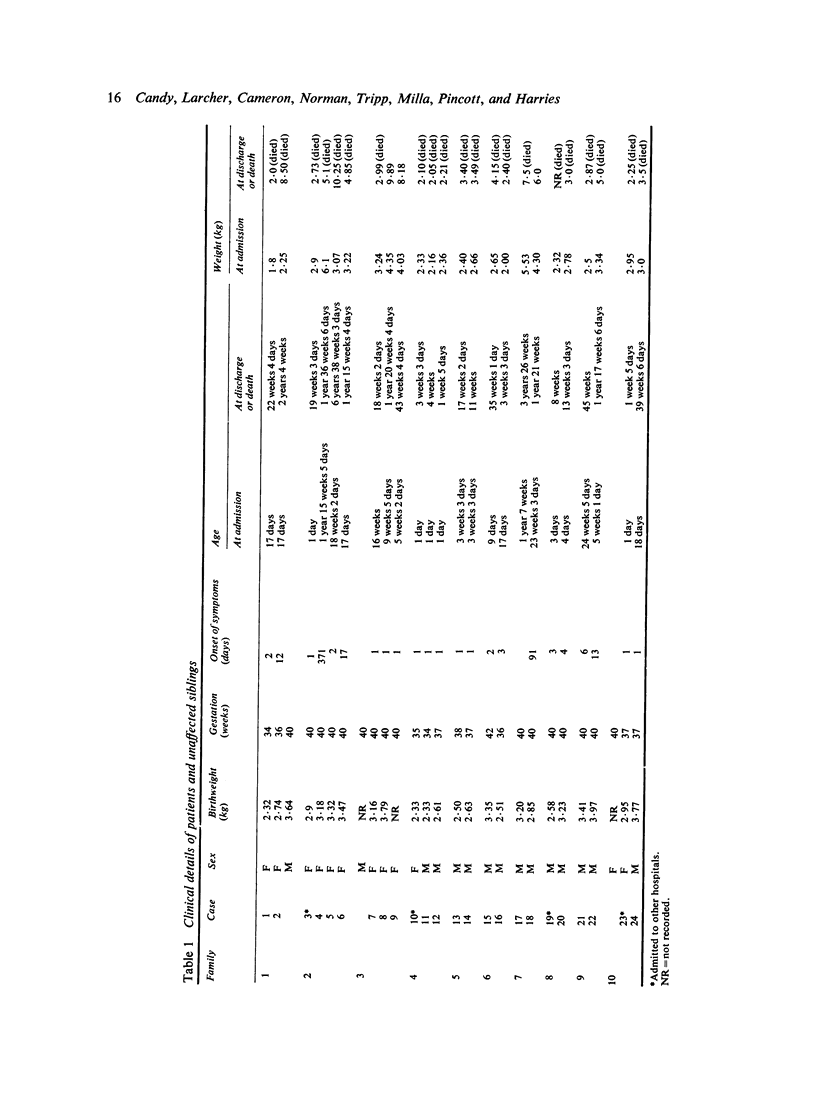
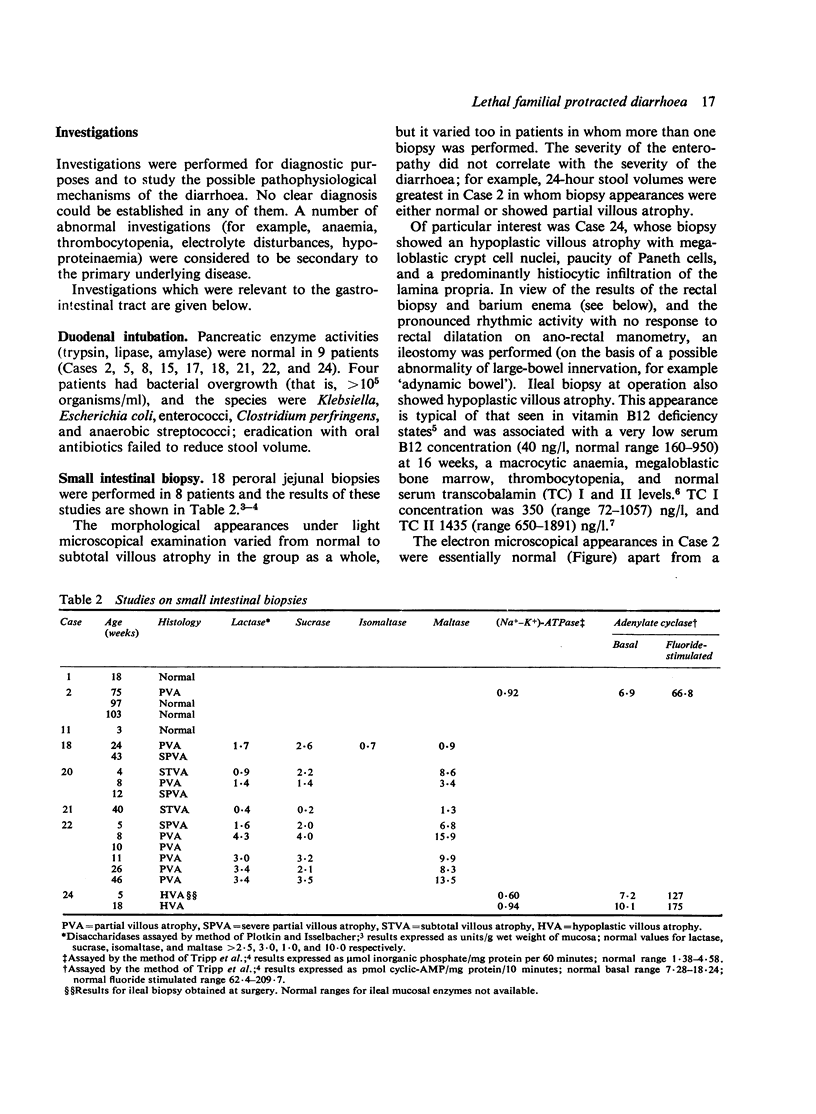
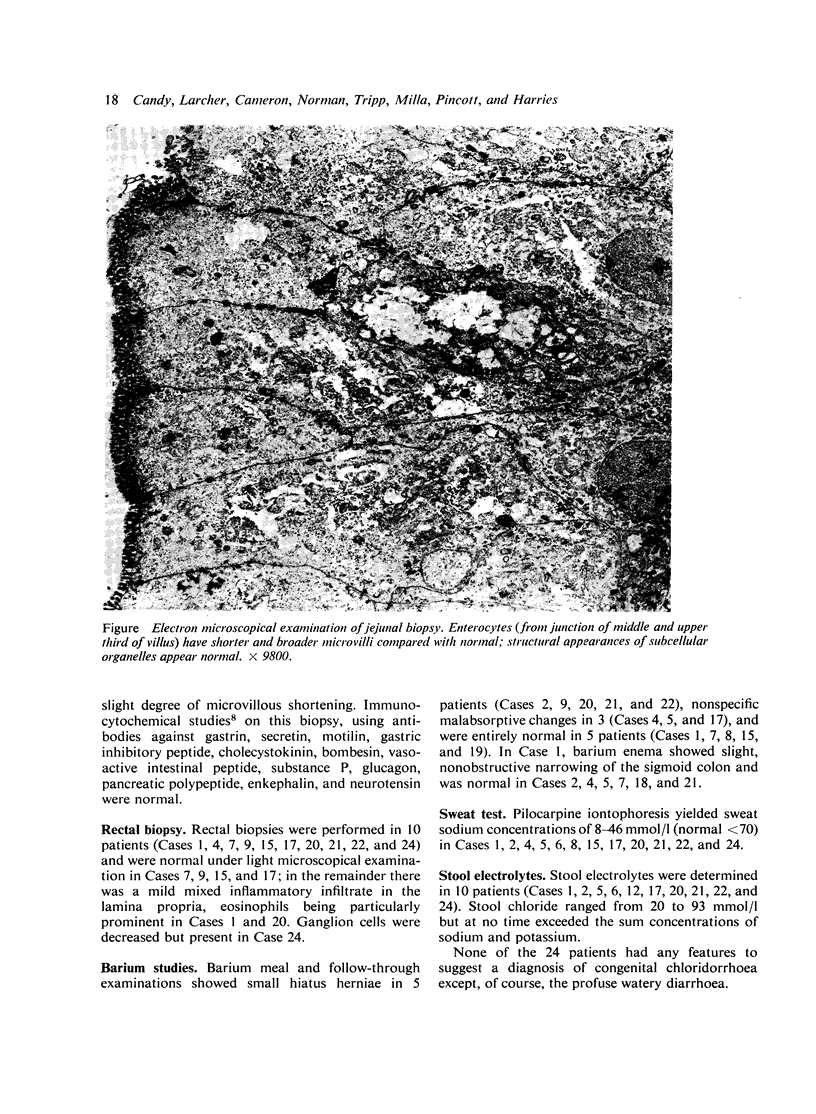
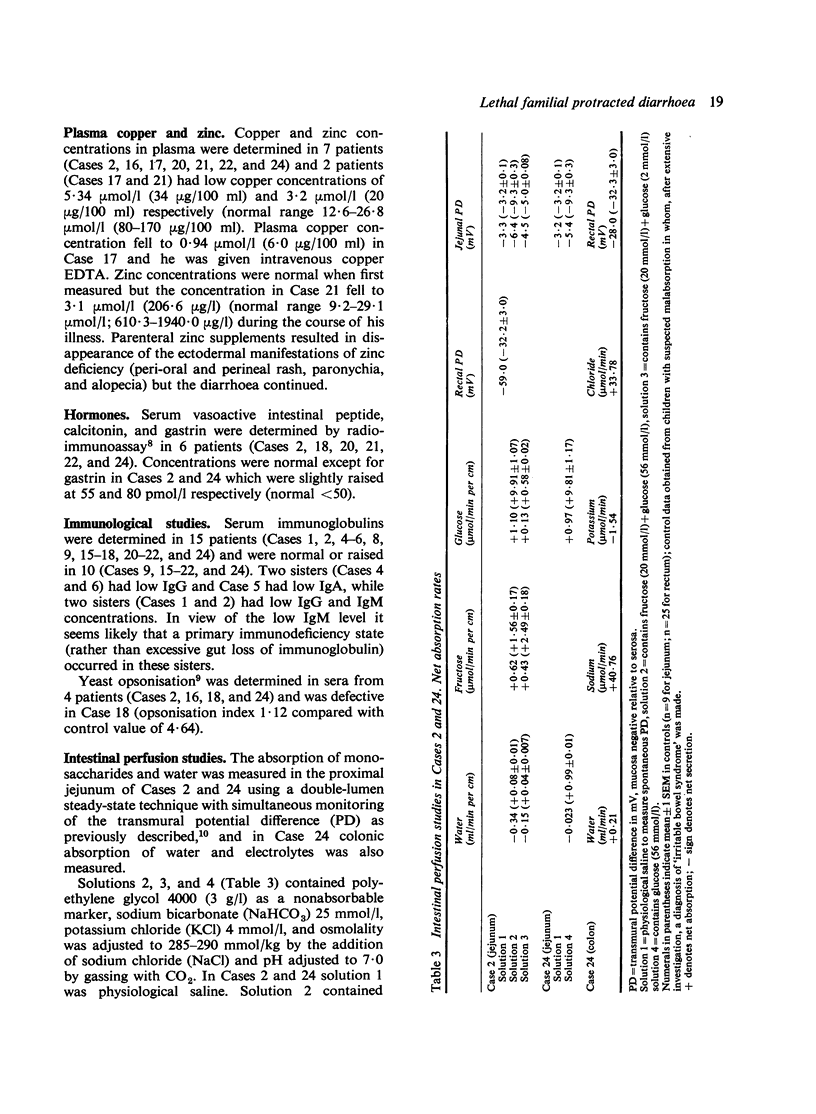
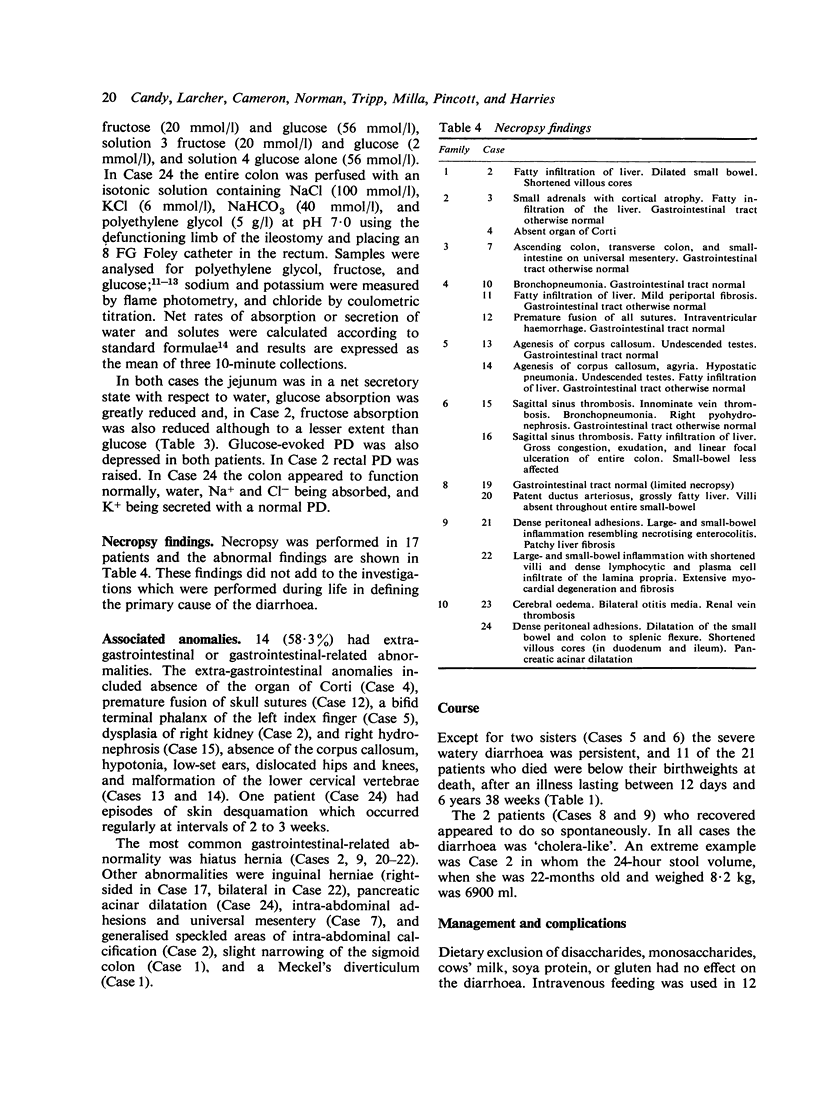
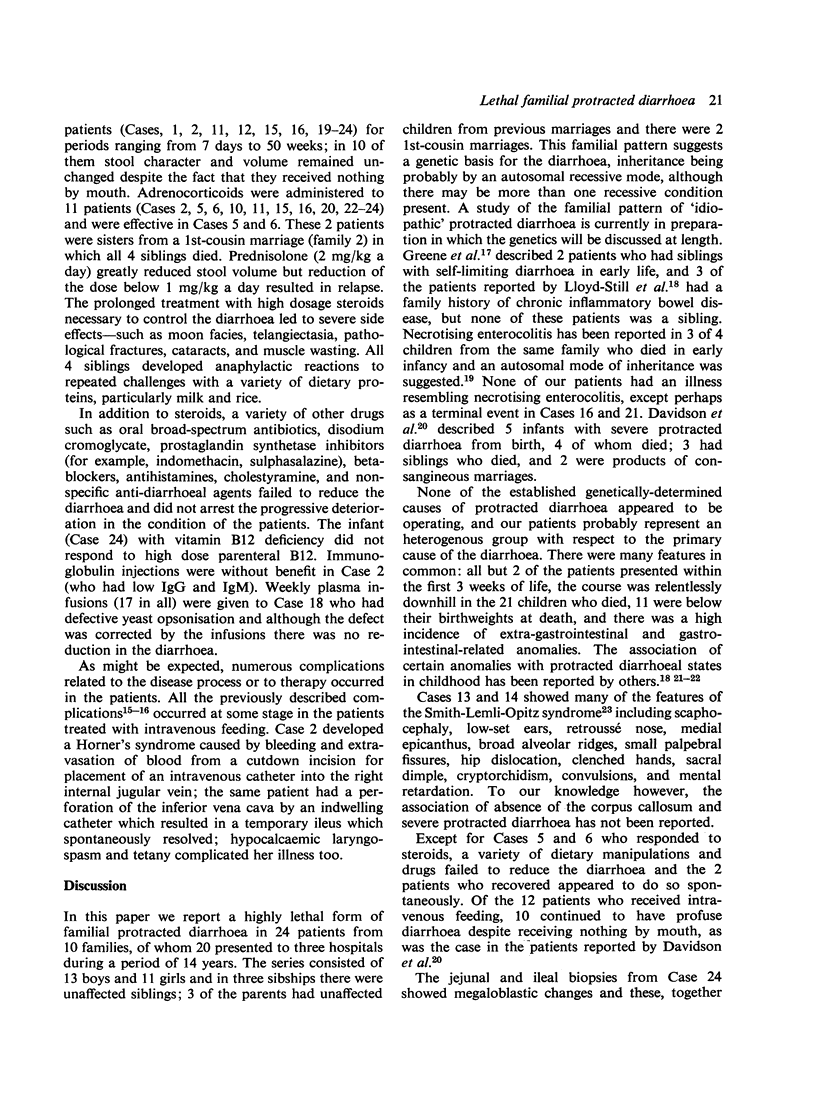
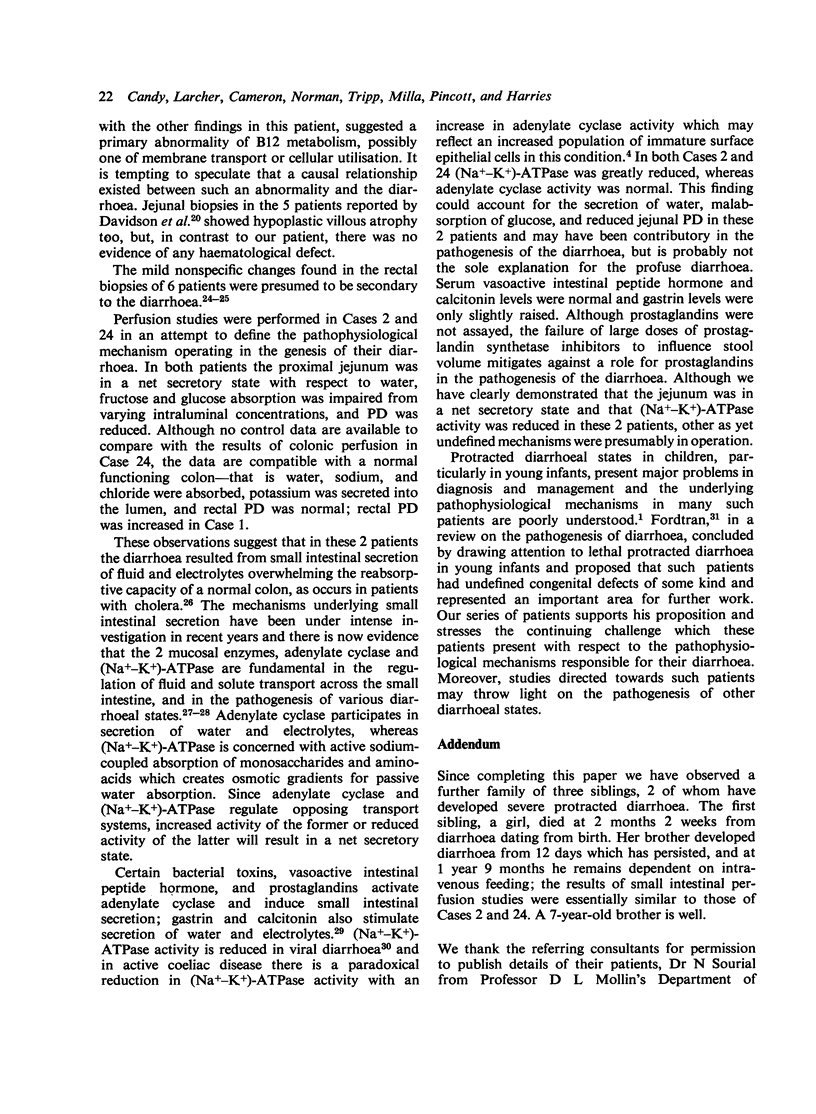
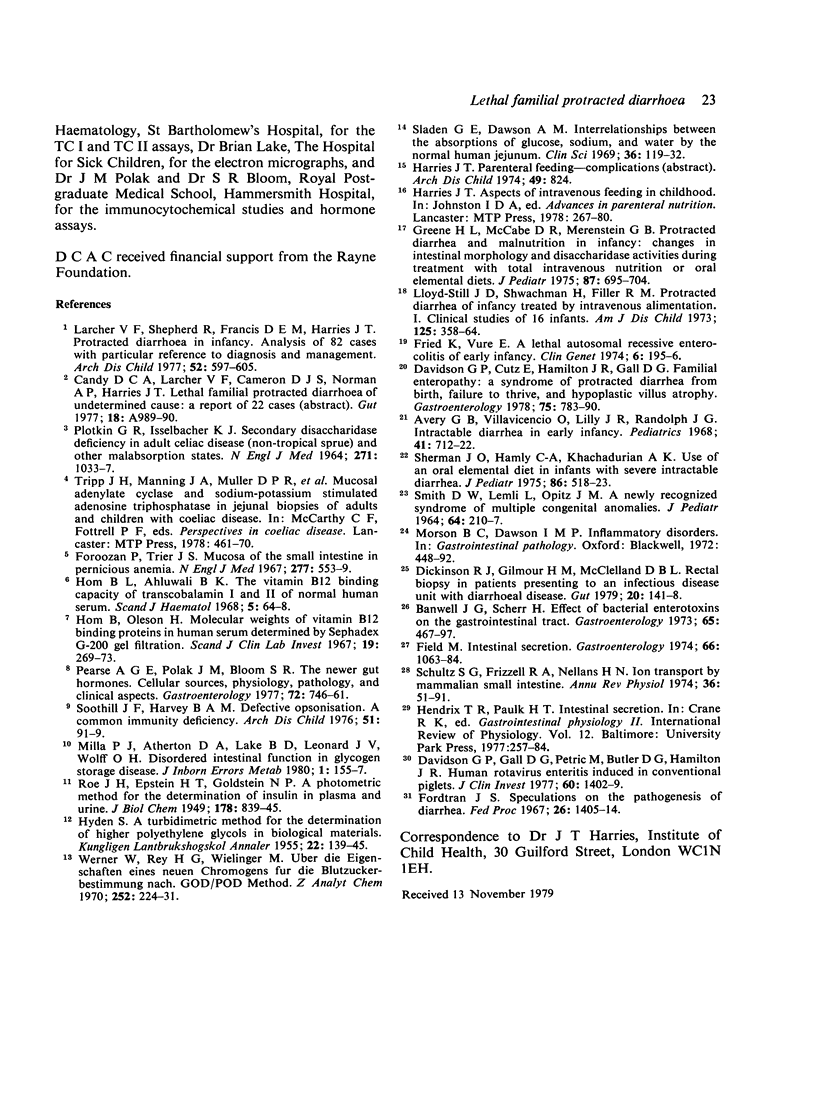
Images in this article
Selected References
These references are in PubMed. This may not be the complete list of references from this article.
- Avery G. B., Villavicencio O., Lilly J. R., Randolph J. G. Intractable diarrhea in early infancy. Pediatrics. 1968 Apr;41(4):712–722. [PubMed] [Google Scholar]
- Banwell J. G., Sherr H. Effect of bacterial enterotoxins on the gastrointestinal tract. Gastroenterology. 1973 Sep;65(3):467–497. [PubMed] [Google Scholar]
- Davidson G. P., Cutz E., Hamilton J. R., Gall D. G. Familial enteropathy: a syndrome of protracted diarrhea from birth, failure to thrive, and hypoplastic villus atrophy. Gastroenterology. 1978 Nov;75(5):783–790. [PubMed] [Google Scholar]
- Davidson G. P., Gall D. G., Petric M., Butler D. G., Hamilton J. R. Human rotavirus enteritis induced in conventional piglets. Intestinal structure and transport. J Clin Invest. 1977 Dec;60(6):1402–1409. doi: 10.1172/JCI108901. [DOI] [PMC free article] [PubMed] [Google Scholar]
- Dickinson R. J., Gilmour H. M., McClelland D. B. Rectal biopsy in patients presenting to an infectious disease unit with diarrhoeal disease. Gut. 1979 Feb;20(2):141–148. doi: 10.1136/gut.20.2.141. [DOI] [PMC free article] [PubMed] [Google Scholar]
- Field M. Intestinal secretion. Gastroenterology. 1974 May;66(5):1063–1084. [PubMed] [Google Scholar]
- Fordtran J. S. Speculations on the pathogenesis of diarrhea. Fed Proc. 1967 Sep;26(5):1405–1414. [PubMed] [Google Scholar]
- Foroozan P., Trier J. S. Mucosa of the small intestine in pernicious anemia. N Engl J Med. 1967 Sep 14;277(11):553–559. doi: 10.1056/NEJM196709142771101. [DOI] [PubMed] [Google Scholar]
- Fried K., Vure E. A lethal autosomal recessive entero-colitis of early infancy. Clin Genet. 1974;6(3):195–196. doi: 10.1111/j.1399-0004.1974.tb00650.x. [DOI] [PubMed] [Google Scholar]
- Greene H. L., McCabe D. R., Merenstein G. B. Protracted diarrhea and malnutrition in infancy: Changes in intestinal morphology and disaccharidase activities during treatment with total intravenous nutrition or oral elemental diets. J Pediatr. 1975 Nov;87(5):695–704. doi: 10.1016/s0022-3476(75)80290-3. [DOI] [PubMed] [Google Scholar]
- Harries J. T. Proceedings: Parenteral feeding--complications. Arch Dis Child. 1974 Oct;49(10):824–824. doi: 10.1136/adc.49.10.824-b. [DOI] [PMC free article] [PubMed] [Google Scholar]
- Hom B. L., Ahluwalia B. K. The vitamin B12 binding capacity of transcobalamin I and II of normal human serum. Scand J Haematol. 1968;5(1):64–74. doi: 10.1111/j.1600-0609.1968.tb01719.x. [DOI] [PubMed] [Google Scholar]
- Hom B., Olesen H. Molecular weights of vitamin B12 binding proteins in human serum determined by Sephadex G-200 gel filtration. Scand J Clin Lab Invest. 1967;19(3):269–273. doi: 10.3109/00365516709090636. [DOI] [PubMed] [Google Scholar]
- Larcher V. F., Shepherd R., Francis D. E., Harries J. T. Protracted diarrhoea in infancy. Analysis of 82 cases with particular reference to diagnosis and management. Arch Dis Child. 1977 Aug;52(8):597–605. doi: 10.1136/adc.52.8.597. [DOI] [PMC free article] [PubMed] [Google Scholar]
- Lloyd-Still J. D., Shwachman H., Filler R. M. Protracted diarrhea of infancy treated by intravenous alimentation. I. Clinical studies of 16 infants. Am J Dis Child. 1973 Mar;125(3):358–364. doi: 10.1001/archpedi.1973.04160030032006. [DOI] [PubMed] [Google Scholar]
- PLOTKIN G. R., ISSELBACHER K. J. SECONDARY DISACCHARIDASE DEFICIENCY IN ADULT CELIAC DISEASE (NONTROPICAL SPRUE) AND OTHER MALABSORPTION STATES. N Engl J Med. 1964 Nov 12;271:1033–1037. doi: 10.1056/NEJM196411122712003. [DOI] [PubMed] [Google Scholar]
- Pearse A. G., Polak J. M., Bloom S. R. The newer gut hormones. Cellular sources, physiology, pathology, and clinical aspects. Gastroenterology. 1977 Apr;72(4 Pt 1):746–761. [PubMed] [Google Scholar]
- SMITH D. W., LEMLI L., OPITZ J. M. A NEWLY RECOGNIZED SYNDROME OF MULTIPLE CONGENITAL ANOMALIES. J Pediatr. 1964 Feb;64:210–217. doi: 10.1016/s0022-3476(64)80264-x. [DOI] [PubMed] [Google Scholar]
- Sherman J. O., Hamly C. A., Khachadurina A. K. Use of an oral elemental diet in infants with severe intractable diarrhea. J Pediatr. 1975 Apr;86(4):518–523. doi: 10.1016/s0022-3476(75)80140-5. [DOI] [PubMed] [Google Scholar]
- Sladen G. E., Dawson A. M. Interrelationships between the absorptions of glucose, sodium and water by the normal human jejunum. Clin Sci. 1969 Feb;36(1):119–132. [PubMed] [Google Scholar]
- Soothill J. F., Harvey B. A. Defective opsonization. A common immunity deficiency. Arch Dis Child. 1976 Feb;51(2):91–99. doi: 10.1136/adc.51.2.91. [DOI] [PMC free article] [PubMed] [Google Scholar]



